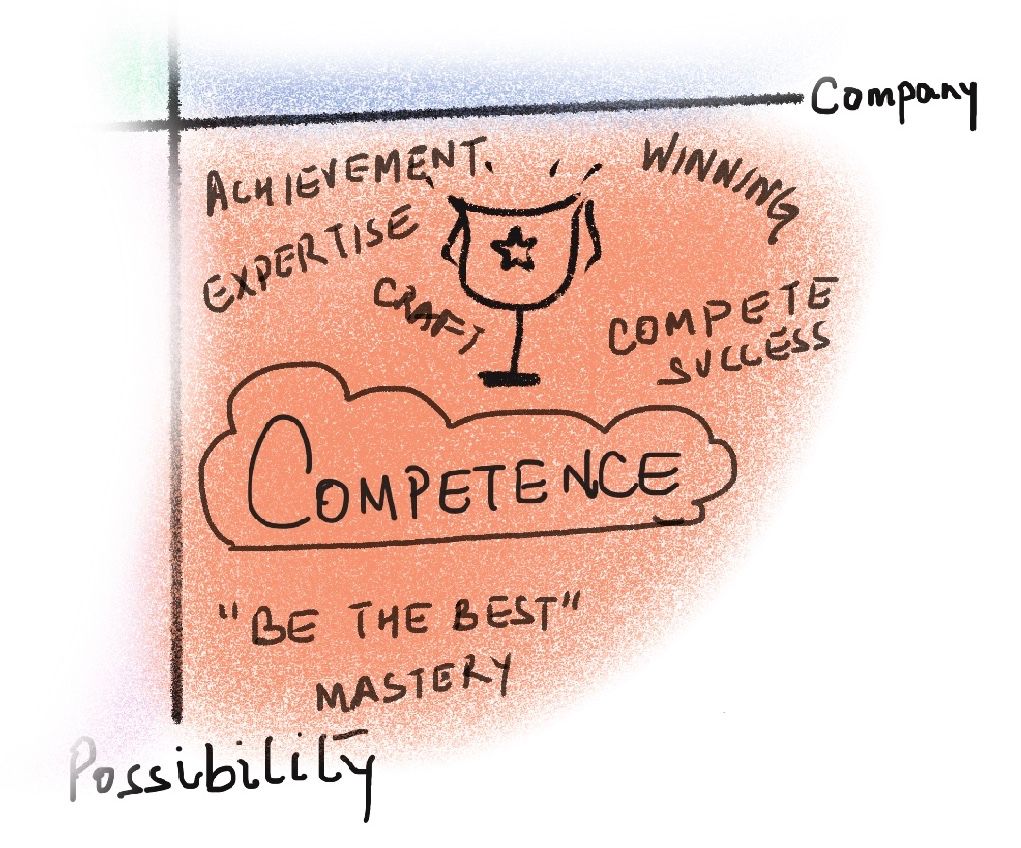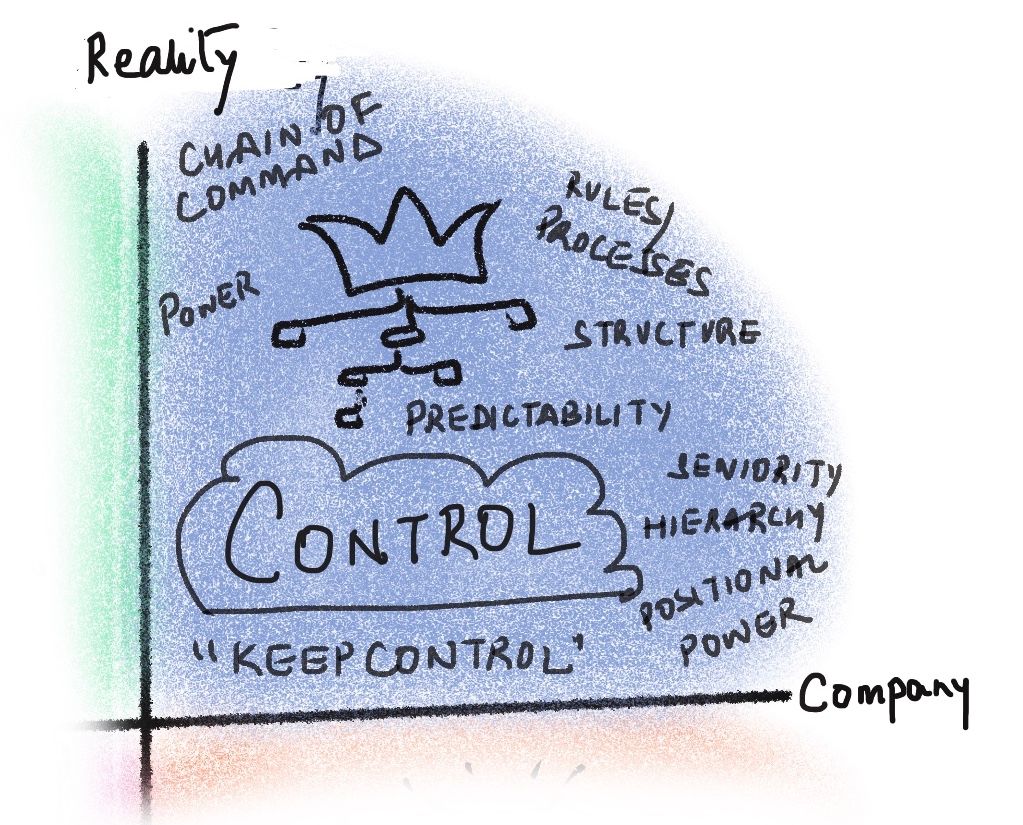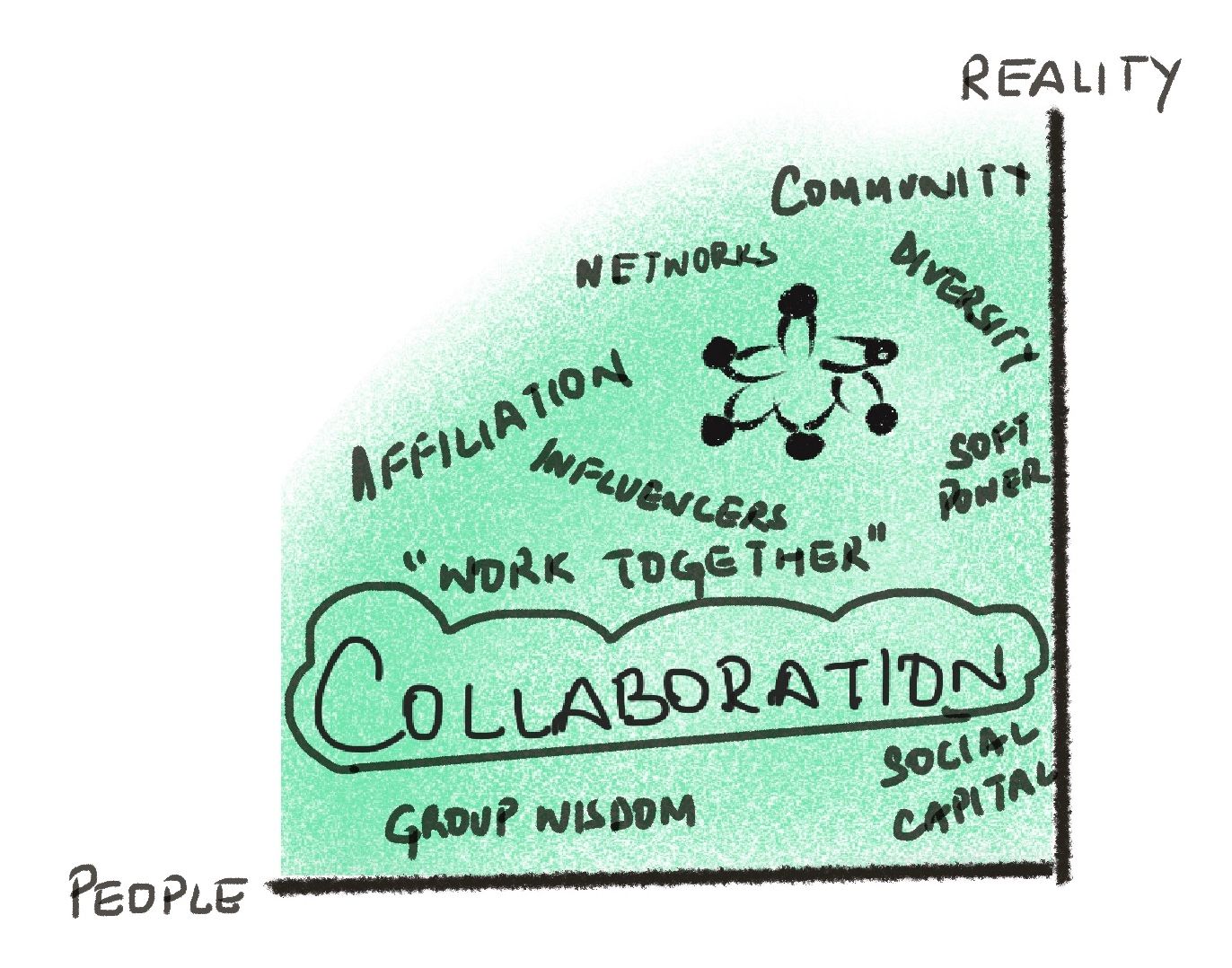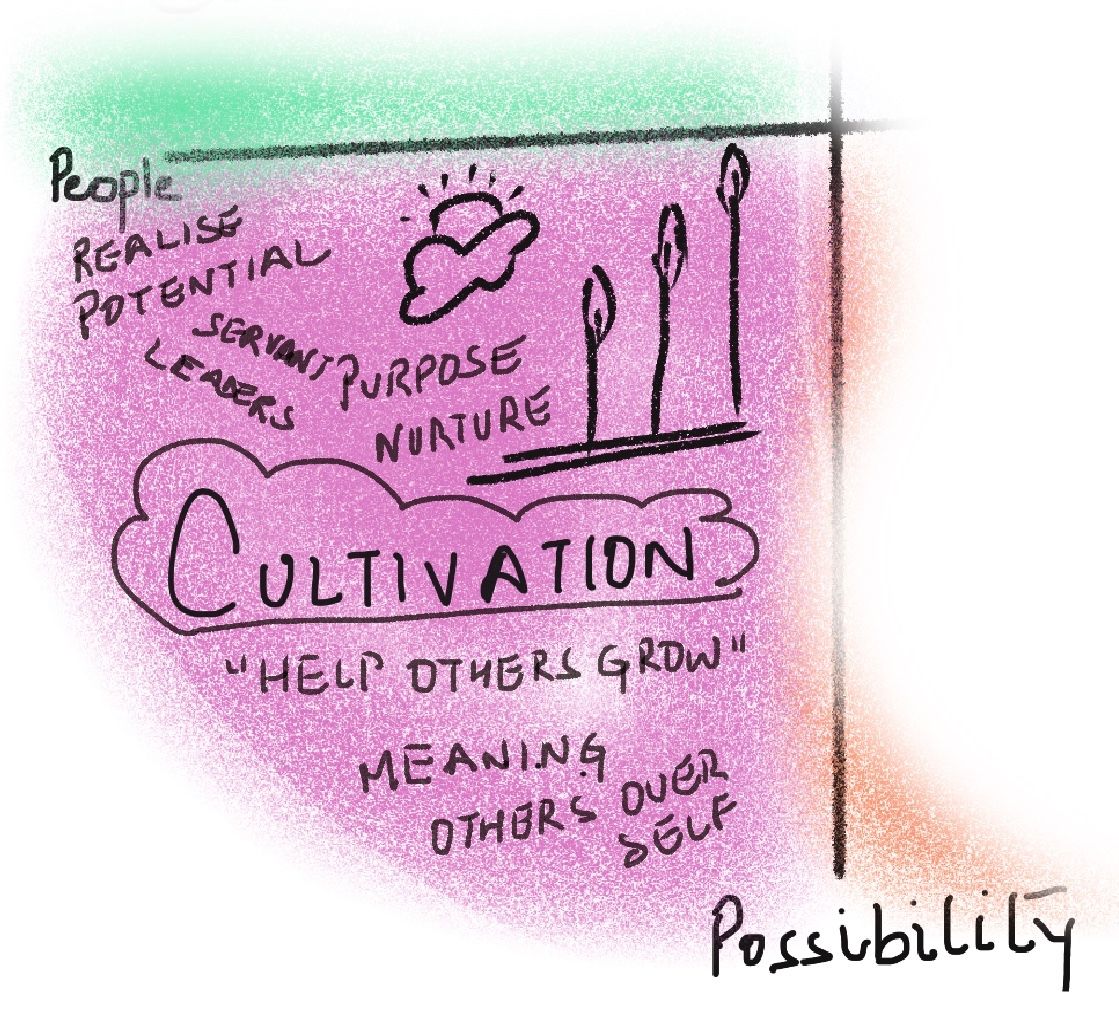Types of Org. Cultures
Understanding the 4 types of org. cultures as illustrated in Schneider's core culture model - collaboration, competence, control & cultivation.

"All models are wrong, some are useful" ~ George Box, statistician.
In our work over the past two years, every time we’ve had a conversation about different types of cultures, we’ve started with this quote! It captures our belief that complex human phenomena like culture, which are dynamic, ever-changing & often unpredictable, are impossible to represent in a two by two model.
The model can only be an approximation of the truth but it can also be illuminating if we use it with discernment.
Prefer listening to reading? You can listen to this article on our podcast
The field of study on organisational cultures is quite vast, and you will find quite a few models out there attempting to explain different types of cultures. We’ve been using Schneider’s core culture model in our work, specifically in the context of building a strong culture of cultivation. We like another quote by Box that might explain why we like this model in particular:
“Just as the ability to devise simple but evocative models is the signature of the great scientist, so over-elaboration and overparameterization is often the mark of mediocrity.”
It’s simple, non judgemental, easy to apply, and yet allows us to examine culture through many layers & lenses.
The model views culture through two axes: Whether an organisation is more people oriented or company oriented; and whether it’s more focused on the reality of today or looks to future possibilities. The decisions and investments an organisation makes will depend on its orientation along these axes. Based on where it falls on these, an organisation could experience one of four types of cultures as its dominant one. We emphasise the word dominant here, because any organisation is likely to have components of more than one type of culture. But it’s likely that one type will be most dominant.
I. Culture of Competence
This culture is company & possibility oriented. In another article, we spoke about the various elements of culture. Every type of culture has beliefs that lie at its core. One of the core beliefs in a Culture of Competence, is “We succeed by being the best”. So naturally people’s focus is high on craftsperson-ship and continuously honing their skills.

a) General environment: There is high focus on learning & up-skilling. Learning & training programs are abundantly available & the environment is abuzz with lots of learning opportunities. Creativity & innovation are valued. This culture tends to be more individualistic and often competitive, as people are more interested in “being the best”, even within their respective teams. Medals, awards & trophies are a common sight, exalting those who “won” at something. While the investment in learning is likely to be high, it’s not necessarily a people oriented environment. Achievement & success, individual & that of the organisation may often come at the expense of people’s well being.
b) Power: Power tends to lie with “experts” - people look up to them & are influenced by those who master their craft much more than by those who hold positional power.
c) Heroes & Legends: Heroines / heroes of this organisation are highly skilled craftspeople, known for their creativity, professionalism & achievement. Achievers are celebrated. People who are seen as self reliant, go getters are idols for others.
d) Quest: At the heart of it all, what people are really seeking in a culture like this is achievement.
Organisations like Apple, Mckinsey, 3M are known for their competence cultures.
II. Culture of Control
This culture is company & reality oriented. One of the core beliefs in this type of culture, is “We succeed by getting & keeping control”. There is a high focus on creating strong processes & boundaries, which ensure predictable outcomes. Another belief, is that - “the path is given, all one needs to do is follow it faithfully” ~quoted from Discover the Alchemist Within

a) General environment: This is a world of structure and order. There are clear hierarchies with an explicit chain of command. Roles & responsibilities are prescribed in detail, policies & processes trump people’s autonomy & wisdom, things are expected to run like clockwork. Any departure from rules & boundaries is undesirable, and in fact quite often even dangerous.
b) Power: In this culture, power tends to be positional. People who hold titles & positions higher up in the chain of command, will hold true power over the system. Promotions will be highly sought after for the same reason.
c) Heroes & Legends: It stands to reason then, that heroines / heroes of this organisation will often be people with “seniority” or “tenure”, along with those who hold powerful positions & titles.
d) Quest: At the heart of it all, what people are really seeking in a culture are power & control.
In today’s world, this kind of culture often gets a bad rap because it isn’t fashionable or appears boring & suffocating. But think about it - if you are about to get surgery, would you rather have a medical team that prepares the operating theatre in their own unique creative way, or a team that follows tested & prescribed rules to a T, to ensure your safety? The latter right? When you board a flight, would you rather that the pilot tried on some fun, innovative way of flying the aircraft? Or that she follows proper procedure of operations & communication so that you can go home to your family safely? Most likely, the latter again. Whether we like it or not, this culture isn’t bad in itself, in some contexts it’s the only one that makes sense.
Many manufacturing companies tend to have this culture even today. The military is a prime example of this type of culture as well.
III. Culture of Collaboration
This culture is people & reality oriented.
“If you want to go quickly, go alone. If you want to go far, go together.” – African Proverb.
This proverb captures the underpinnings of this culture. This is a culture that puts people first & relies on the power of the collective rather than individual stars. A core belief in this type of culture is “We succeed by working together”

a) General environment: This is a fluid world, abuzz with communities & conversations. Groups of people are seen brainstorming or having passionate discussions. Relationships sometimes trump results. Nurturing interpersonal relationships is considered critical. Diversity is valued, even sought after, as it leads to better decisions & outcomes. Trust in each other & the larger group’s wisdom pervades all phenomena, including decision making. Crowdsourcing of ideas is common. In general, bringing people together is a worthy cause in itself.
b) Power: In this culture, power lies with those who have wide networks & strong relationships. The power exercised is “soft” in nature as opposed to positional or top down. Empathy, persuasion & getting buy-in from groups leads to effective outcomes, rather than simply communicating decisions.
c) Heroes & Legends: Skilled influencers & networkers are often the heroines & heroes in this culture. People who show great powers of persuasion & can facilitate groups through complex tasks or decisions, are valued. People with high “social capital” are sought after.
d) Quest: At the heart of it all, what people are really seeking is affiliation.
Agile as a philosophy & methodology embodies this culture to a large degree. Organisations like Google & Netflix are positioned as highly collaborative in nature.
IV. Culture of Cultivation
This culture is people & possibility oriented. We think this quote describes the mental model held in this culture quite well:
"Power isn't control at all — power is strength, and giving that strength to others. A leader isn't someone who forces others to make him/her stronger; a leader is someone willing to give her/his strength to others that they may have the strength to stand on their own." –Beth Revis
This world retains much of the other-centeredness present in the collaboration culture. The fundamental stance in this culture is that you exist in service of the other, and in pursuit of a much larger purpose & vision. A core belief in this type of culture is “We succeed by growing people who fulfil our vision”.

a) General environment: This is a world where pursuit of a higher purpose and realising one’s potential take prime focus. You can draw some parallels with the self actualisation phase with Maslow’s hierarchy of needs to get an idea of the psychological landscape of this world. In addition, people constantly seek to understand the “why” behind any & all pursuits. Is this meaningful? Will this help someone? Will it have a positive impact on the world I inhabit? These are questions that people constantly grapple with. Inspiration, subjectivity & creativity are valued & sought. It is also a world of flow & unfolding - where purpose & meaning keep evolving, and learning is a worthy pursuit by itself. The foundation all this stands on though, is a mindset of service. The pull is to go beyond oneself & help others learn & grow. Whether it’s a simple act of sharing feedback or coaching someone into a breakthrough transformation - the underlying intent is to help others realise their own potential. There is near unshakable faith in the human capacity to grow & evolve.
b) Power: In this culture, power lies with those who facilitate other people’s growth - coaches, mentors, trainers, process workers & facilitators are some examples. The nature of this power is also soft, perhaps even tacit. It comes from the trust, regard & reciprocation others offer you as a result of your genuine desire to help them. Self serving motives won’t get you far in this culture. You might even say it’s a paradox - power comes to those who seek it the least.
c) Heroes & Legends: People who embody servant leadership are celebrated in this culture. Stories of personal breakthroughs & growth, overcoming odds and finding inspiration are told & heard often - and at the centre of these will be the “cultivators” who made them possible.
d) Quest: At the heart of it all, what people are really seeking is meaning.
While it may sound rather utopian, this sort of culture is common in humanitarian non profits & spiritual organisations. Elements of this culture have already evolved organically at ThoughtWorks and we hear many heart warming stories of cultivation from our people. We have become quite convinced through our work that it is entirely possible to build this culture at for profit companies as well.
We personally find the ideals of a cultivation culture incredibly inspiring & we have been working towards strengthening it at ThoughtWorks. A great man with a brilliant mind and courageous spirit articulated what we hope, not just for ThoughtWorks but for organisations of the future.
“It is high time the ideal of success should be replaced with the ideal of service.” — Albert Einstein
If you want to explore your organisation’s culture type, try the Schneider Survey.
References:
Book - The Reengineering Alternative by William Schneider
Book - Discover the Alchemist Within
Cover image credit: Elina Sitnikova on Unsplash
Acknowledgements: Gurpreet Luthra has helped review this article.
Schneider model illustrations: by Our Culture Cafe




